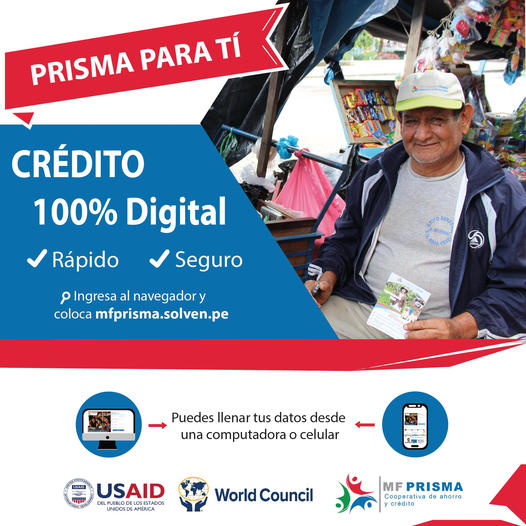“Solven” a Digital Problem for Credit Unions in Peru
2021-11-29When leaders of WOCCU’s Economic Inclusion Project (EIP) in Peru and Ecuador set out to expand financial inclusion to Venezuelan migrants and refugees and vulnerable local populations, they knew digitization would have to play a large role in that effort.
Less than 18 months into the project, EIP has already made tremendous strides. Working with Solven, a local fintech in Peru, EIP has encouraged partner entities to think more about generating and strengthening digital strategies, and less about traditional high-cost, low-coverage approaches to doing business.
Specializing in the development of digital solutions for financial institutions, Solven supports credit unions that partner with EIP to design and customize their digital platforms—improving the experience for their members and facilitating a path toward automating processes for the credit unions, which makes them agile, efficient and responsive.
Solven has worked with two credit unions to date, MF Prisma and Finansol, helping them launch digital platforms that provide easily accessible credit to marginalized populations.
In June 2021, MF Prisma launched its Prisma Para Ti platform, which allows people to apply for a loan online or through an app within minutes.
“Due to the flexibility and adaptability of these digital solutions, access to credit is available to people without a credit history, as well as Venezuelan migrants who obtain their first credit product in Peru through these platforms,” said Oscar Guzman, Chief of Party for the Economic Inclusion Project. “But that doesn’t mean the loans are high-risk. In the five months since the implementation of Prisma Para Ti, MF Prisma has already developed a high-quality loan portfolio through the use of this platform.”
Providing digital credit options also goes hand in hand with the design of marketing strategies through digital channels and social networks, which not only positions the products, but also contributes to more modern brand positioning for the credit unions.
The Economic Inclusion Project’s alliance with Solven has helped expand digital financial services to more credit unions, which brings WOCCU closer to meeting its Challenge 2025 goal of expanding financial inclusion worldwide through the digitization of credit unions.
